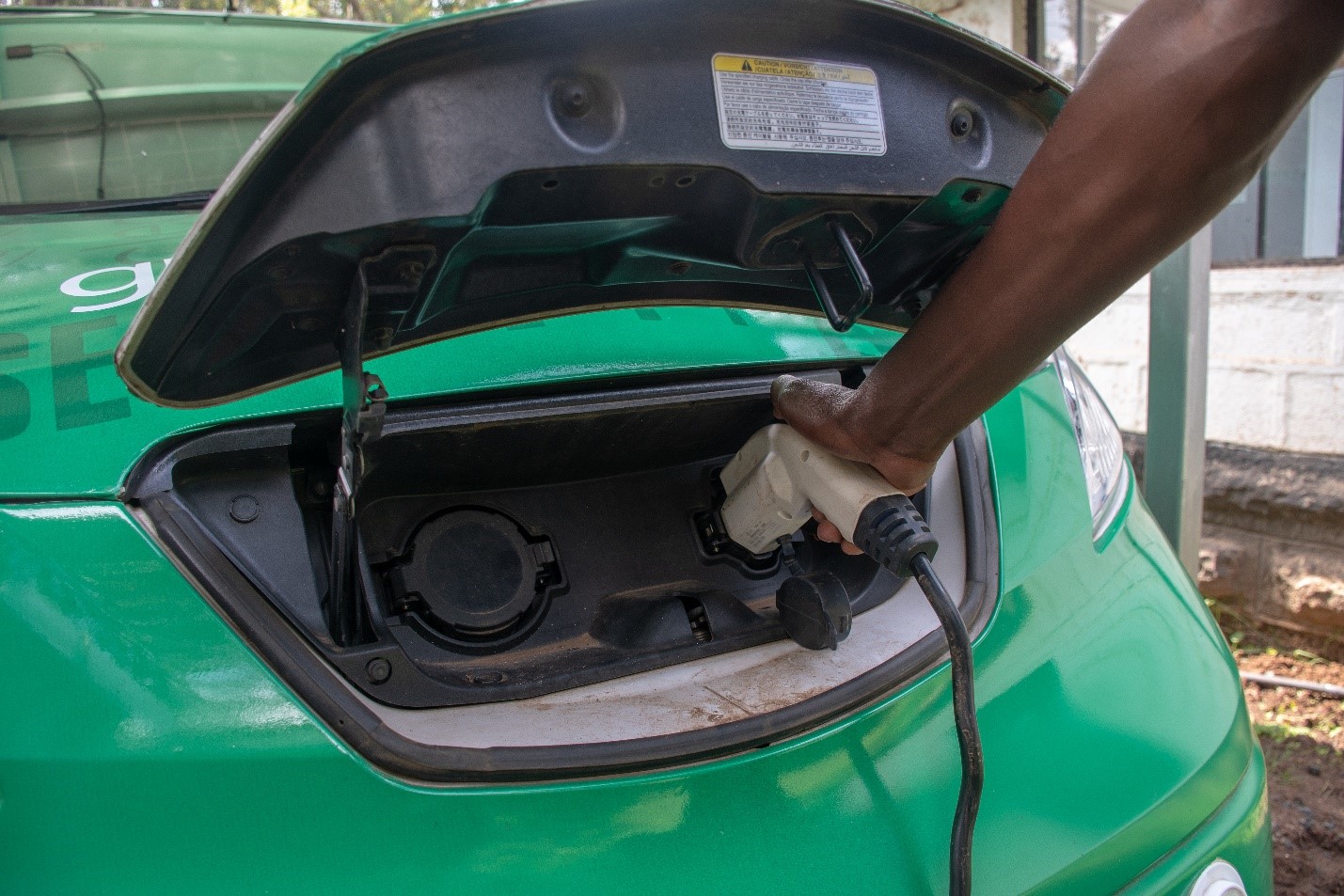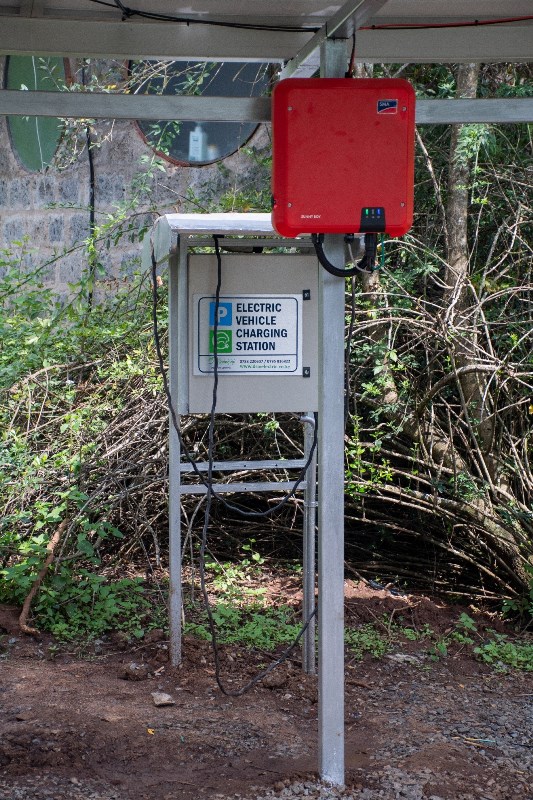Electric Mobility
Introduction
Electric mobility also known as e-mobility is the use of electricity to power the transport infrastructure as an alternative to fossil fuels. This electricity is preferably from renewable energy sources such as hydro, geothermal, wind and solar to minimise overall emissions. Kenya’s energy mix is very favourable to support e-mobility with nearly 85% of our energy coming from renewables. This is a great opportunity for Kenya.
The integration of electric mobility presents an opportunity to rethink the prevailing transport paradigm and build an interlinked, low-emission transport system with low levels of pollution.
In Kenya, the transport sector, particularly road transportation, is one of the main sources of climate-damaging CO2 emissions. The reason for this is the predominant use of fossil fuels for vehicle propulsion systems. A greater degree of electrification of the transport sector, can therefore make a major contribution toward achieving Kenya’s transport sector goal of reducing emissions by 3.46 MtCO2e against the baseline in 2030.
Diesel vehicles in particular, are also making it more difficult for many cities to comply with the annual average air quality tolerance limits for residential areas, of 60 micrograms per cubic meter for nitrogen dioxide, and 140 micrograms per cubic meter for suspended particulate matter that has been in effect since 2014. It is currently estimated that there are about 350 electric vehicles (EVs) registered in Kenya. This figure is out of a total of 3.5 million registered vehicles of which we estimated only 2.2 million to still be on the road.

© Copyright Deutsche Gesellschaft fuer Internationale Zusammenarbeit (GIZ) GmbH
Types of electric vehicles
There are different types of electric vehicles, ranging from 100% full electric vehicles to partial electric vehicles. Below are the different categories of EVs in the market.
- Battery Electric Vehicles (BEVs) – BEVs use batteries to store the electric energy that powers the motor. EV batteries are charged by plugging the vehicle into an electric power source. BEVs fall in the category of what is considered a full electric vehicle.
- Hybrid Electric Vehicles (HEV) – HEVs are powered by an internal combustion engine and by an electric motor that uses energy stored in a battery. The battery is charged through regenerative braking and by the internal combustion engine and does not plug in to charge.
- Plug-in Hybrid Electric Vehicles (PHEV) – PHEVs are powered by an internal combustion engine and an electric motor that uses energy stored in a battery. The vehicle can be plugged in to an electric power source to charge the battery.
- Fuel Cell Vehicles use hydrogen to generate electricity onboard the vehicle.
There are numerous possibilities to charge the battery of an electric vehicle:
- Wallboxes: wall-mounted boxes specially designed for charging electric vehicles
- In-house electrical installations, e.g. using a socket specifically designed for charging purposes
- Charging stations installed specifically for electric vehicles
Charging technology for every occasion

© Copyright Deutsche Gesellschaft fuer Internationale Zusammenarbeit (GIZ) GmbH
With battery-electric vehicles, there are three different systematic approaches for charging batteries:
- Cable-based charging
- Battery swapping
- Inductive charging
Cable-based charging is currently the standard form. Battery swapping has so far not become widespread, in part because there are no standardized batteries for all electric vehicles, in particular, electric motorcycles. Inductive charging is currently in the testing and development phase
Current Ongoing Programmes in Kenya
- Knowledge products on electric mobility: The government in partnership with development partners is developing knowledge products on electric mobility with a view on building public interest on the subject (E-mobility). These include production of a fact sheet detailing the state of Kenya’s advancements on issues of electric mobility, quick facts fact sheet on electric mobility and an electric mobility brochure answering common questions on electric mobility. These documents can be downloaded from the resources section.
- Public and private sector engagement: proactive engagement ofstakeholders from both public and private sector is happening on a continuous basis. The objective of the consultation is to identify barriers that hinder the uptake of electric mobility in Kenya and provide corrective measures.
- Reduction of excise duty on electric vehicles: The Finance Bill of 2019 has proposed reduction on the excise duty for all vehicles with only electric motor for propulsion (BEVs) from 20% to 10%.
- Development of standards for electric vehicles: with support from development partners, GIZ and UN Environment, the Kenya Bureau of Standards has developed and adopted standards that would apply to electric vehicles imported into the country. Up until now, a total of 21 standards have been developed and adopted, covering specifications and testing procedures for safety aspects as well as performance and power consumption elements.
- Support and endorsement of private and development sector support: The government is involved in E-mobility pilot with UN-Environment where they will engage the City of Kisumu and Kenya Power & Lighting Company Limited through deployment of a total of 50 electric motorcycles on a pilot basis. Through support of GIZ, the government is also engaging the private sector with interests of identifying impediments in the EV business.
Existing Resources
Table: Electric mobility standards for electric motor vehicles and motorcycles (2018)
| Standard | |
|---|---|
| 1 | KS ISO 6469-1:2019 Electrically propelled road vehicles-Safety specifications -Part 1: Rechargeable energy storage system (RESS) |
| 2 | KS ISO 6469-2:2018 Electrically propelled road vehicles-Safety specifications -Part 2: Vehicle operational safety means and protection against failures. |
| 3 | KS ISO 6469-3:2018 Electrically propelled road vehicles-Safety Specifications-Part 3: Electrical safety |
| 4 | KS ISO 6469 – 4:2015 Electrically propelled road vehicles – safety specifications part 4: post-crash electrical safety |
| 5 | KS ISO/TR 8713:2012 Electronically propelled road vehicles – vocabulary |
| 6 | KS ISO 8714:2002 Electric road vehicles- reference energy consumption and range. Test procedures for passenger cars and light commercial vehicles |
| 7 | KS ISO 8715:2001 Electric road vehicles – road operating characteristics |
| 8 | KS ISO/TR 11955:2008 Hybrid electric road vehicles- guidelines for charge balance measurement |
| 9 | KS ISO 12405-4:2018 Electrically propelled road vehicles-Test specification for lithium-ion traction battery packs and systems-Part 4: Performance testing |
| 10 | KS ISO/PAS 16898:2012 Kenya Standard — Electrically propelled road vehicles — Dimensions and designation of secondary lithium-ion cells, First Edition |
| 11 | KS ISO 17409:2015 Kenya Standard — Electrically propelled road vehicles — Connection to an external electric power supply — Safety requirements, First Edition |
| 12 | KS ISO 18300:2016 Electrically propelled road vehicles — Test specifications for lithium-ion battery systems combined with lead acid battery or capacitor, First Edition |
| 13 | KS ISO/PAS 19295:2016 Specification of voltage sub-classes for voltage class B |
| 14 | KS ISO/PAS 19363:2017 Electrically propelled road vehicles-magnetic field wireless power transfer safety and interoperability requirements |
| 15 | KS ISO 23274-1:2013 Hybrid-electric road vehicles-exhaust emissions and fuel consumption measurements part 1: non externally chargeable vehicles |
| 16 | KS ISO 23274-2:2012 Hybrid-electric road vehicles- exhaust emissions and fuel consumption measurements part 2: externally chargeable vehicles |
| 17 | KS ISO/TR 13062:2015 Electric mopeds and motorcycles – terminology and classification |
| 18 | KS ISO 13063:2012 Electrically propelled mopeds and motorcycles – safety specifications |
| 19 | KS ISO 13064-1:2012 Battery-electric mopeds and motorcycles- performance part 1: reference energy consumption and range |
| 20 | KS ISO 13064-2:2012 Battery-electric mopeds and motorcycles- performance part 2: road operating characteristics |
| 21 | KS ISO 15031-6: 2015 Road vehicles - Communication between vehicle and external equipment for emissions-related diagnostics Part 6: Diagnostic trouble code definitions |
Studies:
Electric mobility brochures: https://www.changing-transport.org/wp-content/uploads/2019_Electric_Mobility_in_Kenya.pdf
Mitigation potential of electric mobility: https://www.changing-transport.org/publication/ghg-mitigation-options-for-kenya/
UN Environment’s Electric Mobility Programme: https://www.unenvironment.org/explore-topics/transport/what-we-do/electric-mobility